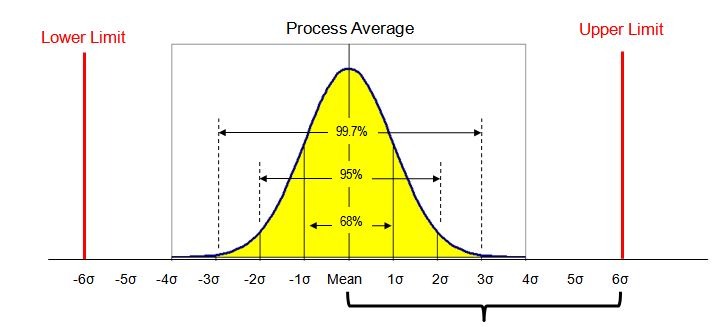Six Sigma: The Quality Catalyst Propelling Business Excellence
This article introduces reader to the concept of Six Sigma with its relevance to the modern day businesses


In today's competitive landscape, businesses thrive on flawless execution, optimized processes, and unwavering customer satisfaction. Six Sigma is a methodology that's not just about crunching numbers and minimizing defects. It's about transforming your organization's DNA to achieve operational excellence.
But what exactly is Six Sigma?
Imagine a world where defects are so rare, you measure them in parts per million (PPM). That's the essence of Six Sigma, a data-driven approach that uses statistical analysis and methodologies like DMAIC (Define, Measure, Analyze, Improve, Control) to systematically eliminate errors and variations. It's like a magnifying glass, uncovering inefficiencies and waste lurking within your processes.
Why is it important for businesses? The benefits are undeniable:
Increased profitability: By reducing defects and waste, Six Sigma leads to cost savings, improved yield, and boosted revenue.
Enhanced customer satisfaction: With fewer errors and higher quality products and services, customer satisfaction soars, leading to increased loyalty and brand advocacy.
Improved employee morale: When processes are optimized and employees are empowered to solve problems, engagement and motivation rise, fostering a positive work environment.
Reduced risk and compliance: Proactive defect prevention minimizes operational risks and ensures compliance with industry regulations.
Sustainable growth: Six Sigma creates a culture of continuous improvement, enabling businesses to adapt to change and stay ahead of the competition.
Let's bring it to life with some real-world examples:
Motorola: By implementing Six Sigma, Motorola reduced defect rates in its mobile phone production by 99%, saving millions of dollars.
General Electric: GE used Six Sigma to improve turbine efficiency by 1%, leading to significant cost savings and environmental benefits.
Honeywell: Six Sigma helped Honeywell reduce aircraft engine rework by 50%, boosting customer satisfaction and improving on-time delivery.
But implementing Six Sigma isn't a magic trick. It requires a cultural shift, commitment from leadership, and dedicated training for employees. However, the rewards are significant and long-lasting, making Six Sigma a worthwhile investment for organizations of all sizes and industries.
Ready to unleash the power of Six Sigma in your business? Here are some key steps:
Identify improvement opportunities: Analyze your processes and pinpoint areas where Six Sigma can make a difference.
Build a strong team: Assemble a team of dedicated individuals with the skills and passion to champion the initiative.
Invest in training and resources: Equip your team with the knowledge and tools they need to implement Six Sigma effectively.
Focus on data-driven decision making: Use data to identify root causes of problems and track progress towards improvement.
Celebrate successes and milestones: Recognition and positive reinforcement are crucial for sustaining momentum.
Remember, Six Sigma is a journey, not a destination. By embracing its principles and implementing its tools, you can transform your business into a high-performing, customer-centric powerhouse, ready to conquer any challenge and navigate the ever-evolving market with confidence.
So, are you ready to join the Six Sigma revolution?
